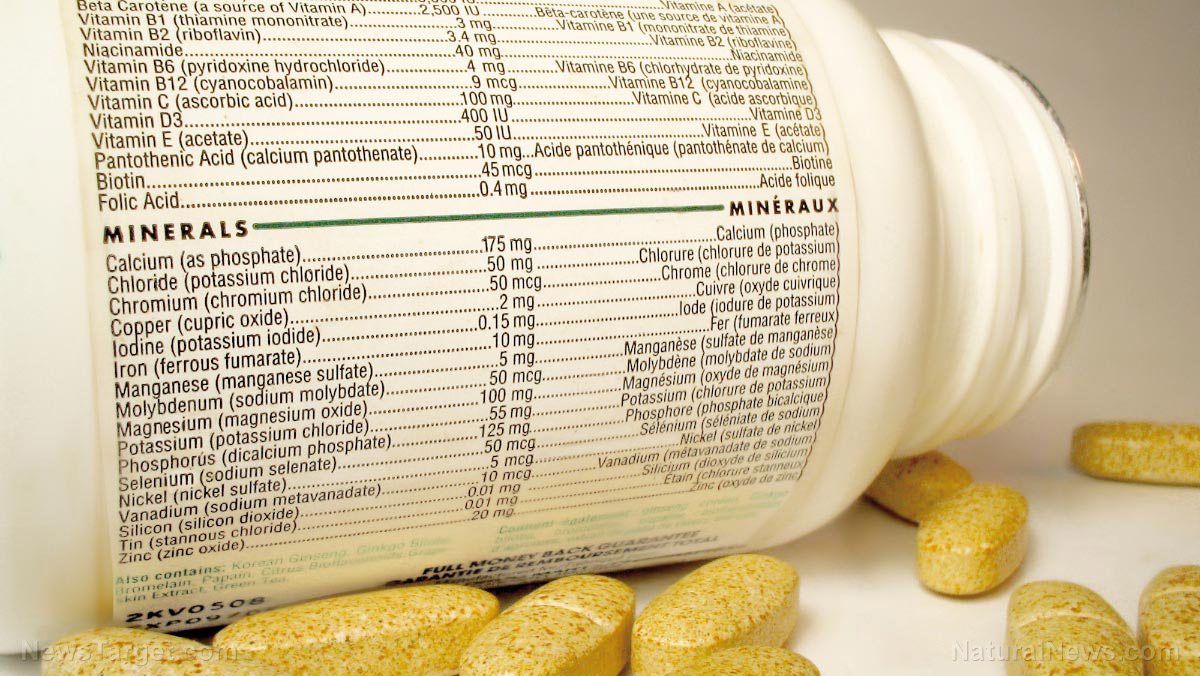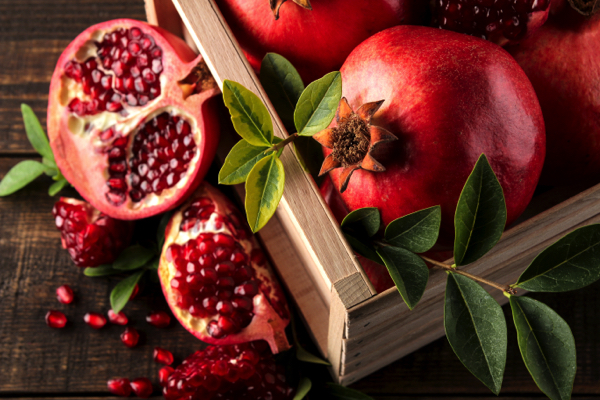Red Clover: A versatile healing plant with many health benefits
04/09/2025 / By Ava Grace

- Red clover (Trifolium pratense), a plant native to Europe, Western Asia, and Northwest Africa, has been used for centuries in traditional medicine. Ancient Greek, Roman and Chinese herbalists had documented its therapeutic properties, and it became a staple in European folk medicine for treating respiratory, skin and hormonal issues. Today, it is cultivated globally for both medicinal and agricultural purposes, such as soil enrichment.
- Red clover is a great source of bioactive compounds, including isoflavones (genistein, daidzein, biochanin A, and formononetin), flavonoids, coumarins, phenolic acids and essential minerals like calcium and magnesium. These compounds boast antioxidant, anti-inflammatory and hormone-balancing effects.
- Red clover is widely studied for its ability to alleviate menopausal symptoms (e.g., hot flashes, night sweats) and support bone health by reducing osteoporosis risk. It also promotes cardiovascular health by improving arterial flexibility and lowering LDL cholesterol. Additionally, it has potent anticancer properties, particularly protecting hormone-sensitive tissues, and is traditionally used to detoxify and support respiratory health.
- Red clover can be consumed in the form of tea, tinctures and capsules or added to foods like salads, smoothies and soups. Topical creams and poultices containing red clover are used to treat skin conditions like eczema and acne. Its mild, slightly sweet flavor also makes it a versatile culinary ingredient.
- Known by names like meadow clover and cow clover, red clover is recognized for its vibrant pink-purple flowers and trifoliate leaves. It holds cultural significance, such as in Irish folklore, where it symbolizes luck and protection. Popular recipes include red clover tea blends, salads, smoothies and infused honey, showcasing its nutritional and medicinal value.
Red clover (Trifolium pratense), a vibrant and versatile herbaceous plant belonging to the legume family, has long been revered for its medicinal properties and nutritional benefits. Native to Europe, Western Asia and Northwest Africa, this flowering plant has since been naturalized across the globe, thriving in temperate climates in North America and Australia. With its rich history, potent phytonutrients and wide-ranging health applications, red clover stands as a testament to the enduring power of nature’s pharmacy.
Brief history of red clover
Red clover’s use as a healing herb dates back centuries. Ancient Greek and Roman herbalists first documented its therapeutic properties, while Traditional Chinese Medicine healers used it to support respiratory and skin health. In Europe, red clover became a staple in folk medicine during the Middle Ages, often used to treat coughs and skin conditions and purify blood.
By the 19th century, it had gained recognition in Western herbalism, particularly for its role in women’s health. Today, red clover is cultivated worldwide, not only for its medicinal value but also for its ability to enrich soil nitrogen, thanks to its symbiotic relationship with nitrogen-fixing bacteria. (Related: Red clover improves blood flow, bone density and alleviates menopause symptoms.)
Red clover is known by several common names, reflecting its widespread use and cultural significance. These include meadow clover, cow clover and purple clover. Its scientific name, Trifolium pratense, derives from the Latin words “tres” (three) and “folium” (leaf), referring to its characteristic trifoliate leaves.
Red clover is easily recognizable by its vibrant pink to purple flower heads, which are round and densely packed with tiny florets. The leaves are oval-shaped, often marked with a pale crescent or “V” shape. When consumed, red clover has a mild, slightly earthy taste with a hint of sweetness, making it palatable in both medicinal and culinary recipes.
In Irish folklore, red clover is associated with good luck and protection. It was believed that carrying a four-leaf clover — a rare variation of the plant — could ward off evil spirits and bring prosperity. While the four-leaf variety is uncommon, the three-leaf red clover remains a symbol of resilience and vitality, embodying the plant’s enduring legacy as a healing herb.
Phytonutrients and health benefits
Red clover is a treasure trove of bioactive compounds that contribute to its health-promoting properties. Among its most notable phytonutrients are isoflavones, a class of polyphenols that mimic estrogen in the body. These include genistein, daidzein, biochanin A and formononetin. Additionally, red clover contains flavonoids, coumarins, phenolic acids and essential minerals like calcium, magnesium and potassium. These compounds work synergistically and exert antioxidant, anti-inflammatory and hormone-balancing effects.
Red clover has been studied extensively for its potential to prevent and alleviate a variety of health conditions. Its isoflavones, in particular, have garnered attention for their ability to support hormonal balance, making it a popular remedy for menopausal symptoms such as hot flashes, night sweats and mood swings. Research suggests that red clover may also promote bone health by reducing the risk of osteoporosis, a condition linked to declining estrogen levels in postmenopausal women.
Beyond hormonal health, red clover has demonstrated cardiovascular effects. Its isoflavones have been shown to improve arterial flexibility and reduce LDL cholesterol levels, thereby supporting heart health. The herb’s anti-inflammatory and antioxidant properties further contribute to its protective effects against chronic diseases, including certain cancers. Preliminary studies indicate that red clover may inhibit the growth of cancer cells, particularly in hormone-sensitive tissues like the breast and prostate.
Red clover is also valued for its detoxifying properties. Traditionally, it has been used to support liver function and cleanse the blood, making it a popular ingredient in herbal detox formulas. Additionally, its expectorant qualities make it effective in relieving respiratory conditions such as bronchitis and whooping cough.
Red clover can be consumed in various forms, each offering unique benefits. Dried flowers and leaves are commonly brewed into soothing therapeutic teas. Tinctures and capsules provide a more concentrated dose of red clover’s active components, making them ideal for addressing specific health concerns. Topical applications, such as creams and poultices, are used to treat skin conditions like eczema, psoriasis and acne.
One popular method of incorporating red clover into meals is by adding fresh or dried flowers to salads, soups and smoothies. Red clover flowers have a mild, slightly sweet flavor, making them a versatile addition to culinary creations.
Culinary uses and recipes
Red clover’s mild flavor and nutritional profile make it a delightful ingredient in a variety of dishes. Here are a few recipe ideas to inspire its use:
- Red clover tea blend – Combine dried red clover flowers with chamomile and peppermint for a soothing herbal tea.
- Spring salad with red clover – Toss fresh red clover flowers with mixed greens, strawberries and a balsamic vinaigrette.
- Red clover smoothie – Blend fresh or dried red clover flowers with banana, almond milk and a touch of honey for a nutrient-packed drink.
- Red clover-infused honey – Steep red clover flowers in warm honey for a sweet and medicinal treat.
- Red clover soup – Add dried red clover flowers to vegetable or chicken broth for a nourishing, flavorful soup.
Red clover is more than just a pretty flower; it is a powerhouse of phytonutrients and boast a rich history of medicinal use. From supporting hormonal balance to promoting heart health, this humble herb offers a wealth of benefits for modern wellness. Whether enjoyed as a tea, tincture or culinary ingredient, red clover is a testament to the timeless wisdom of herbal medicine.
This story is not medical advice and is not intended to treat or cure any disease. Always consult with a qualified naturopathic physician for personalized advice about your specific health situation or concern.
Visit NaturalNews.com, a great article source where you can learn about superfoods and their health benefits.
You can also try Brighteon.ai, an AI model created by Mike Adams, also known as the Health Ranger. This model is available as a free download to be run locally and is designed to help share and decentralize knowledge. By doing so, it aims to bypass censorship and empower people with knowledge.
If you’re looking for an uncensored video free speech website where you can openly discuss nutrition, natural medicine, ingredients and more, check out Brighteon.com and out two free speech social media sites, Brighteon.IO and Brighteon.social.
Watch this educational video about red clover’s medicinal benefits.
This video is from the Holistic Herbalist channel on Brighteon.com.
More related stories:
Ease menopausal symptoms naturally with red clover.
Red Clover Blocks Neurological Damage From MSG.
Red clover improves blood flow, bone density and alleviates menopause symptoms.
Study Reveals Benefits of Red Clover for Prostate and Liver Health.
Good news for menopausal women: You can avoid hot flashes by changing your diet.
Sources include:
Submit a correction >>
Tagged Under:
alternative medicine, health science, herbal medicine, Herbs, Menopause, natural cures, natural health, natural medicine, Naturopathy, organics, phytonutrients, plant medicine, red clover, remedies
This article may contain statements that reflect the opinion of the author




















